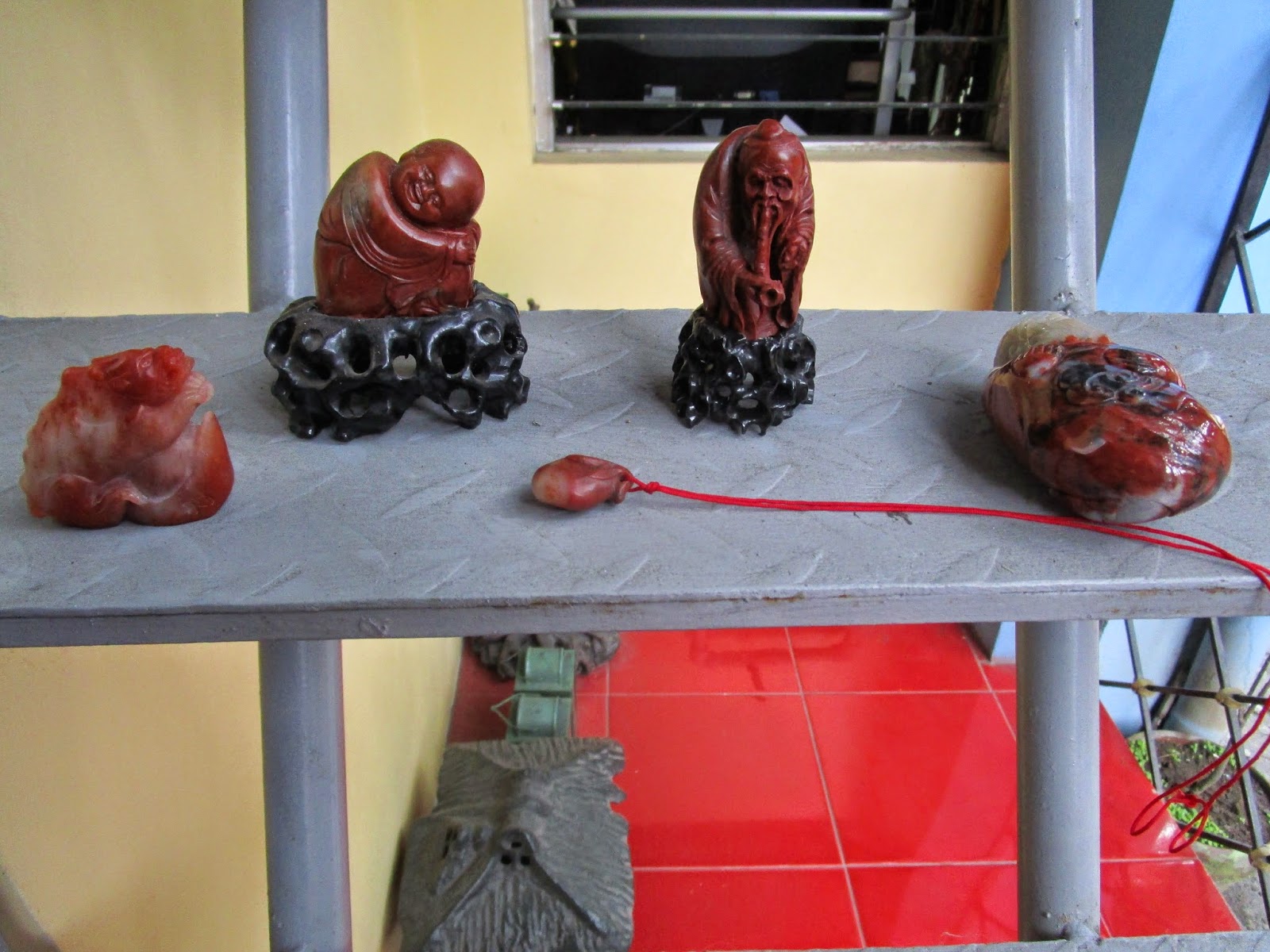My very good Singaporean friends and I are hooked on collecting Shouzan stones, highly prized by the Chinese literati and also called longevity stones. A scholar's desk is not complete without one. They are meant to be touched and are supposed to be able to provide inspiration to a writer. Typically fed with oil, they crystallize over time. The non-crystallized pigment of the stone, on the other hand, actually moves or shifts within the stone. These stones come in different colors, although I got jump-started on red ones.
Shouzan stones are volcanic stones that are carved into figurines by master craftsmen. According to Joash, the biggest collector of these stones in Singapore, the empress dowager of the Ching Dynasty favored this stone because it felt "warm in winter and cool in summer". It was the empress's stone, as opposed to the lychee stone, which is called the concubine's stone. All imperial seals were made from Shouzan stones, but they are also carved into landscapes, human figures, animal figures, mythical beasts, flowers, fruit, and insects.
There is a variety of Shouzan stone that is more exotic than the rest, and I had the good fortune to see and touch samples from Joash's collection. These are the volcanic stones that made their way down the slopes of the mountain and became embedded in the paddies. Such stones developed a "skin" that was then carved in low-relief, or "soft intention", visible against the contrasting tone or color of the actual stone beneath.
As opposed to carvings in "soft intention", there are round stones and three-dimensional stones. You will see them in my Singapore Albums on my Google+ page.
They are, to me, the gemstones of the god of the volcano.
My three Shouzan stones: dreaming boy monk, a gift from Teow Li years ago; old man (Lao Tzu), a recent acquisition; and a peach pendant given to me by Joash.
Other stones from Singapore: Extreme Left, mythical beast from Mongolia; Extreme Right, God of Long Life in tricolor jade, also from Mongolia.



No comments:
Post a Comment